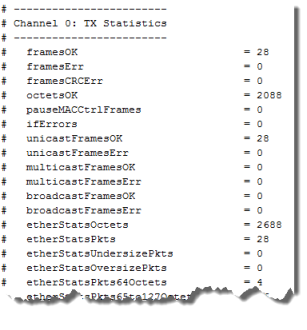Visible to Intel only — GUID: bfg1502453974880
Ixiasoft
1. Quick Start Guide
2. 10GBASE-R Ethernet Design Example
3. 10M/100M/1G/2.5G/10G Ethernet Design Example
4. 1G/2.5G Ethernet Design Example with IEEE 1588v2 Feature
5. 1G/2.5G/10G Ethernet Design Example with IEEE 1588v2 Feature
6. 10M/100M/1G/2.5G/5G/10G (USXGMII) Ethernet Design Example
7. Interface Signals Description
8. Configuration Registers Description
9. Low Latency Ethernet 10G MAC Intel® Stratix® 10 FPGA IP Design Example User Guide Archives
10. Document Revision History for the Low Latency Ethernet 10G MAC Intel® Stratix® 10 FPGA IP Design Example User Guide
Visible to Intel only — GUID: bfg1502453974880
Ixiasoft
5.4.1. Test Case—Design Example with the IEEE 1588v2 Feature
The simulation test case performs the following steps:
- Starts up the design example with an operating speed of 10G.
- Configures the MAC, PHY, and FIFO buffer for both channels.
- Waits until the design example asserts the channel_tx_ready and channel_rx_ready signals for each channel.
- Sends the following packets:
- Non-PTP
- No VLAN, PTP over Ethernet, PTP Sync Message, 1-step PTP
- VLAN, PTP over UDP/IPv4, PTP Sync Message, 1-step PTP
- Stacked VLAN, PTP over UDP/IPv6, PTP Sync Message, 2-step PTP
- No VLAN, PTP over Ethernet, PTP Delay Request Message, 1-step PTP
- VLAN, PTPover UDP/IPv4, PTP Delay Request Message, 2-step PTP
- Stacked VLAN, PTP over UDP/IPv6, PTP Delay Request Message, 1-step PTP
- Repeats steps 2 to 4 for 1G and 2.5G.
When simulation ends, the values of the MAC statistics counters are displayed in the transcript window. The transcript window also displays PASSED if the RX Avalon® streaming interface of channel 0 received all packets successfully, all statistics error counters are zero, and the RX MAC statistics counters are equal to the TX MAC statistics counters.
Figure 30. Sample Simulation Output

